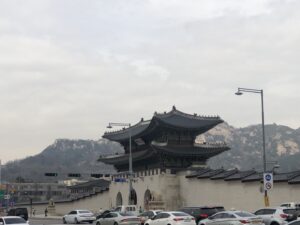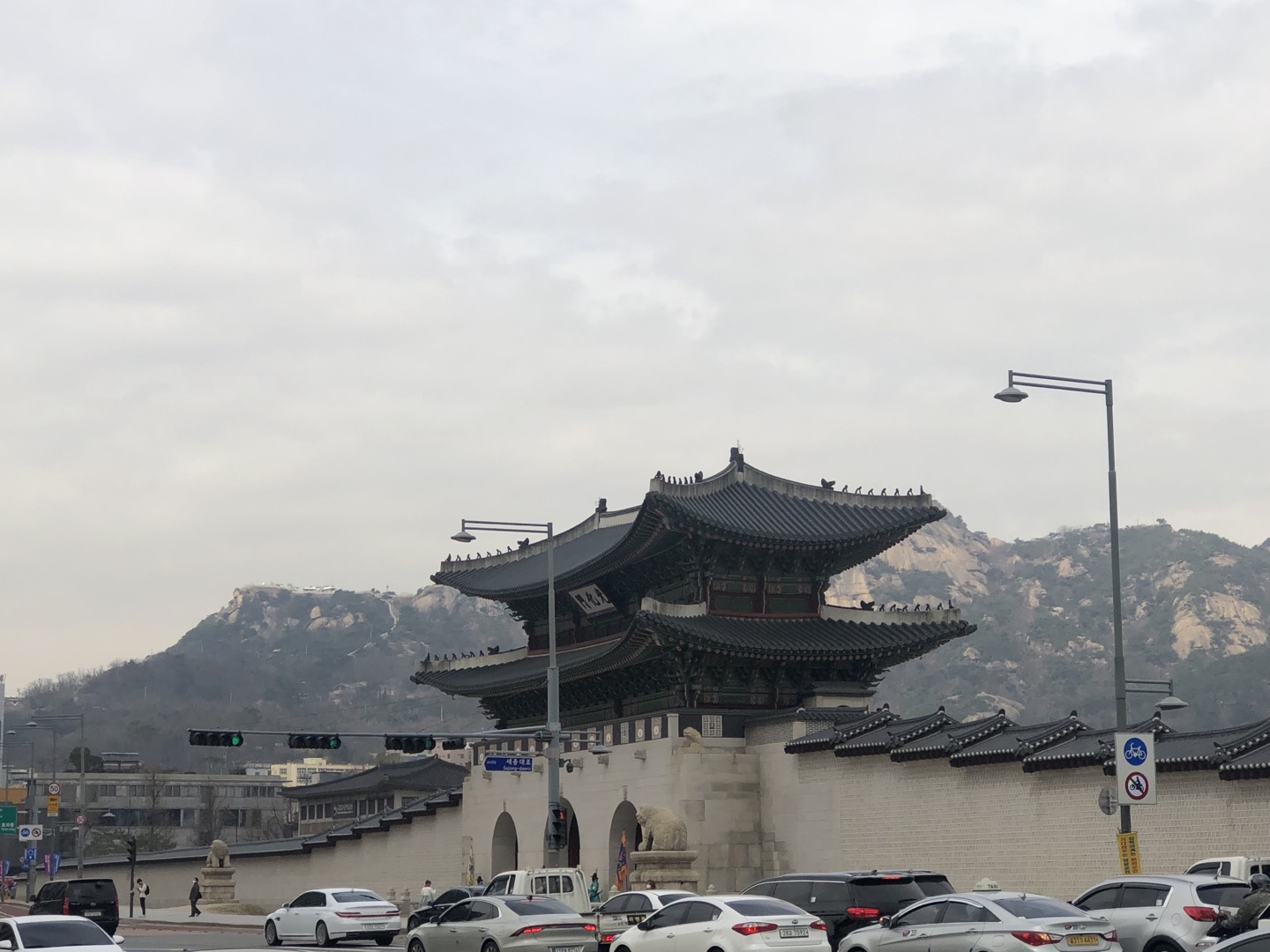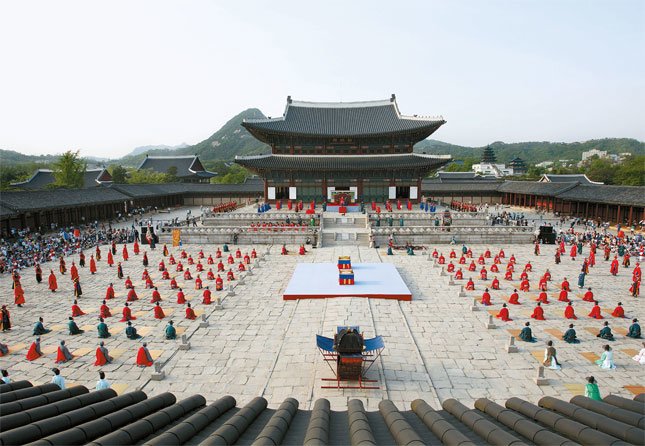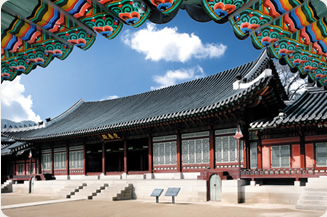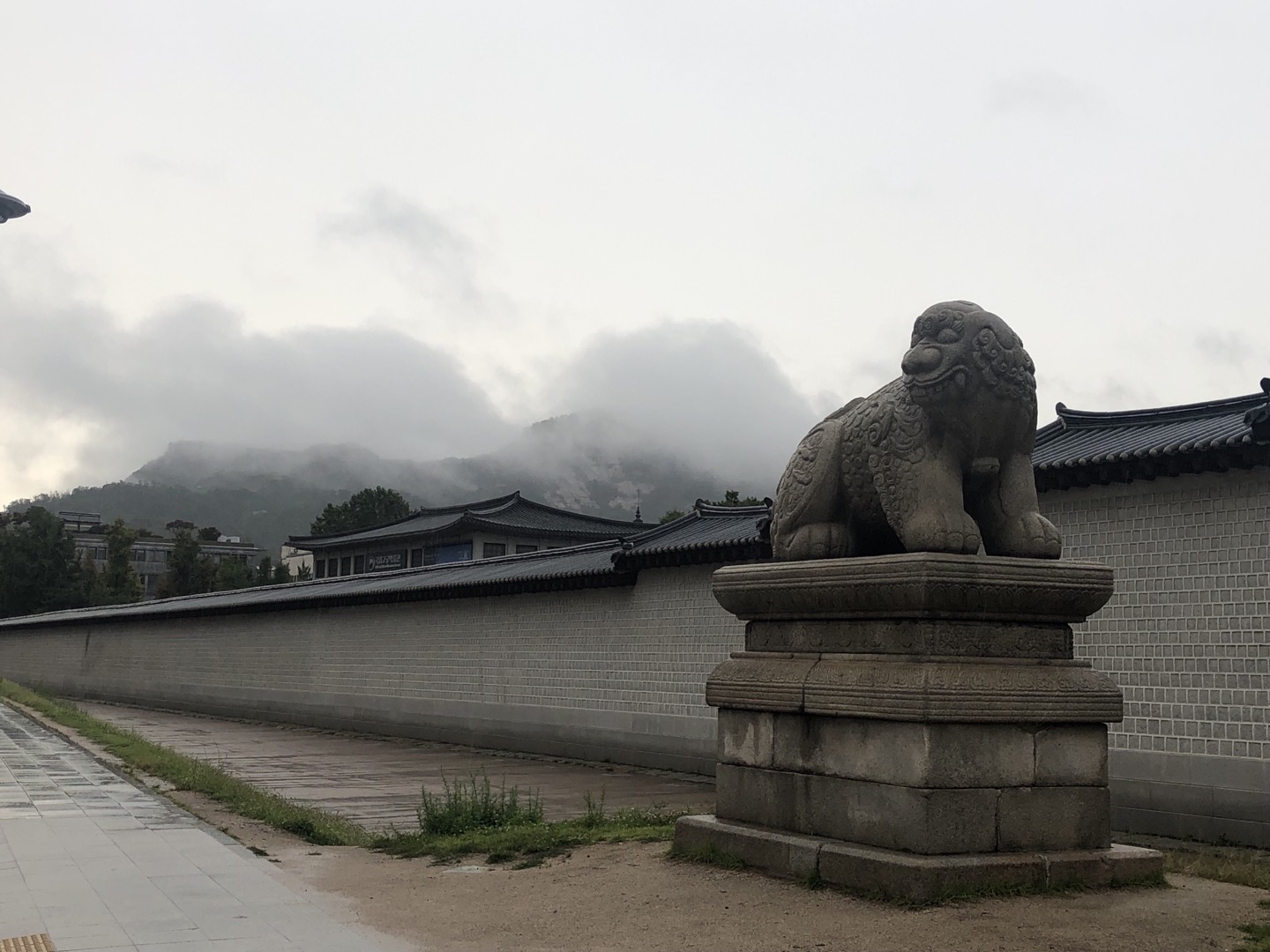Gyeongbokgung Palace was used as the main palace of the Joseon dynasty. It’s not only a place that Koreans love to visit but also many visitors include in their itinerary. It’s probably easy to find the general information of the Gyeongbokgung Palace with a few mouse clicks. However, many sometimes missed things that help to enjoy one of the most famous tourist places. In this article, I would like to introduce 7 things that you must know before visiting Gyeongbokgung palace. I promise it would make your visit more awesome!
1. How To Get Gyeongbokgung Palace from Station(s)
If you are traveling by public transportation, you need to know how to get there before visiting Gyeongbokgung Palace. There are four stations near the palace, which are Gyeongbokgung(경복궁), Gwanghwamun(광화문), Jongak(종각), and Seoul Cityhall(시청). Admittedly, Gyeongbokgung station is the nearest station that directly brings you to the area of the palace. If you give priority to visiting the palace, Gyeongbokgung Palace Staton would be a perfect choice. It’s on subway line 3 (orange line).
You need to walk 10-15 mins more if you get off Gwanghwamun or Jongak stations. Actually, both stations are my preference since it’s an interesting experience passing through from the modern image of Seoul with the building forest to the traditional Korean landscape. You can also find notable statues of the great King Sejong and Admiral Yi Sun-sin on Gwanghwamun Square. Gwanghwamun station is on subway line 5 (purple line) and Jongak is on subway line 1 (blue line) respectively.
Seoul Cityhall would be another option if you have some time and enough stamina to look around before entering the main palace. This station is more used for those who want to visit Deoksugung Palace which was one of the detached places of the Joseon dynasty. It would take 15-20 mins (around 1km) by walk from the Cityhall station to Gyeongbokgung Palace. During that time, you won’t get bored walking through the straight and easy road called “Sejong-daero”.
2. Before Visiting Gyeongbokgung Palace, Get Dressed with Hanbok for No Admission Fee!
The admission fee of the Gyeongbokgung Palace is 3,000 won. You can also purchase “Royal Palace Pass” for 10,000 won, which allows you to enter 4 palaces and Jongmyo Shrine. There is a better way. If you are wearing Hanbok, Korean Traditional Clothing, you will not need to pay any admission fee. Before visiting Gyeongbokgung Palace, you can check Hanbok rental shops that are many near Gyeongbokgung. Another tip, I recommend you to rent a traditional Hanbok with the classical elegance of the design. Clothing with patterns looks flashy, but the basic components of Hanbok will go well with the palace.
Do you like to wear your own clothing, but still want to enter the Gyeongbokgung palace for free? Okay, then you can take a chance at “Cultural Day” that comes on the last Wednesday of every month.
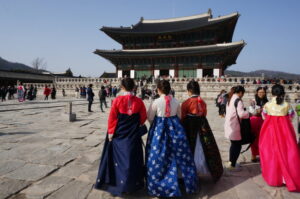
3. Two Museums in the Gyengbokgung Palace
Gyeongbokgung Palace is home to two museums: the National Palace Museum of Korea and the National Folk Museum of Korea. Both are free to enter. In the National Palace Museum, you can see the permanent exhibitions and special exhibitions related to the Joseon dynasty. I would choose two artifacts as the highlight of the collection, which are “Bronze Dragon” that was discovered in the bottom of the pond of Gyeonghoeru Pavillion in 1997 and “The collection of poems” that was written by King Jeongjo and his subjects. You can find them at 2 Joseon Palaces.
The other museum on the ground of Gyeongbokgung is National Folk Museum. It has three main exhibition halls and holds more than 100,000 artifacts that show how Korean people have lived from prehistoric times to the recent dates. When I have visitors from overseas, I always bring them to the twelve zodiac animals at the outdoor exhibit so that they are able to take a picture in front of their zodiac signs.
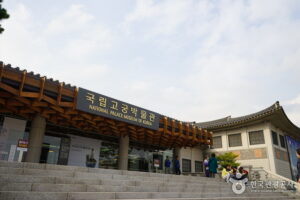
4. Local Food around : Samgyetang, Memil Guksu, Samgyepsal
There are tons of restaurants where you can taste local food around the Gyeongbokgung Palace. I would recommend three restaurants for Samgyetang (삼계탕, Gingseng Chicken Soup), Memil Guksu (메밀 국수, Buckwheat Noodles), and Samgyepsal (삼겹살, Grilled Pork Belly). All the recommended restaurants are based on my experiences with foreign friends.
- Tosokchon (토속촌) for Samgyetang (Gingsing Chicken Soup): It’s a well-known restaurant for both locals and visitors. It has run its business since 1983. As a must-visit restaurant, there is also a menu in English. The ginseng liquor is also served with the food.
- Memilkkot Pil Muryop (메밀꽃 필 무렵) for Memil Guksu (Buckwheat Noodles): I would say that it’s still an obscure restaurant, but attract many buckwheat noodle lovers by word of mouth. You may order buckwheat pancake (be aware it’s not sweet, but savory!), which is the best combo with the buckwheat noodle.
- Bbyeo tan jib (뼈탄집) for Samgyepsal (Korean Style Grilled Pork Belly): Probably, Korean BBQ is one of the most popular Korean food around the world. This restaurant will lead you to the new world of Samgyepsal. How can I explain the taste…? Just trust me, the taste of the pork is another level.
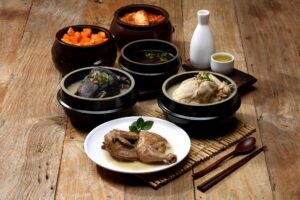
5. Changing of the Royal Guard time
During the Joseon dynasty, the royal guards were responsible for keeping watch at the main gates. They did shift work and were in charge of opening and closing the Gwnghwamun game, which is the main gate of Gyeongbokgung Palace. Now, the royal guards are not actually working, but you can watch the changing of the royal guard twice a day as a show.
[Royal Guard Changing Ceremony]
10:00, 14:00 / 20 minutes per ceremony
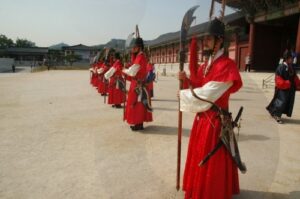
6. Operating Hours
You can visit many places 24/7 here in Korea, however, please keep the operating hours in your mind when visiting Gyeongbokgung Palace. It changes every season.
November-February: 09:00-17:00
March-May: 09:00-18:00
June-August: 09:00-18:30
September-October: 09:00-18:00
Oh, Gyeongbokgung palace closes on Tuesdays. Are you only available on Tuesday? No worries, you can still visit Changdeokgung palace or Deoksugung palace in the very near Gyeongbokgung palace!
7. History of Gyeongbokgung
Most importantly, you’d better know the history of Gyeongbokgung before visiting the palace. One of the famous quotes from the wisdom of great people is completely true: You can only see what you know!
